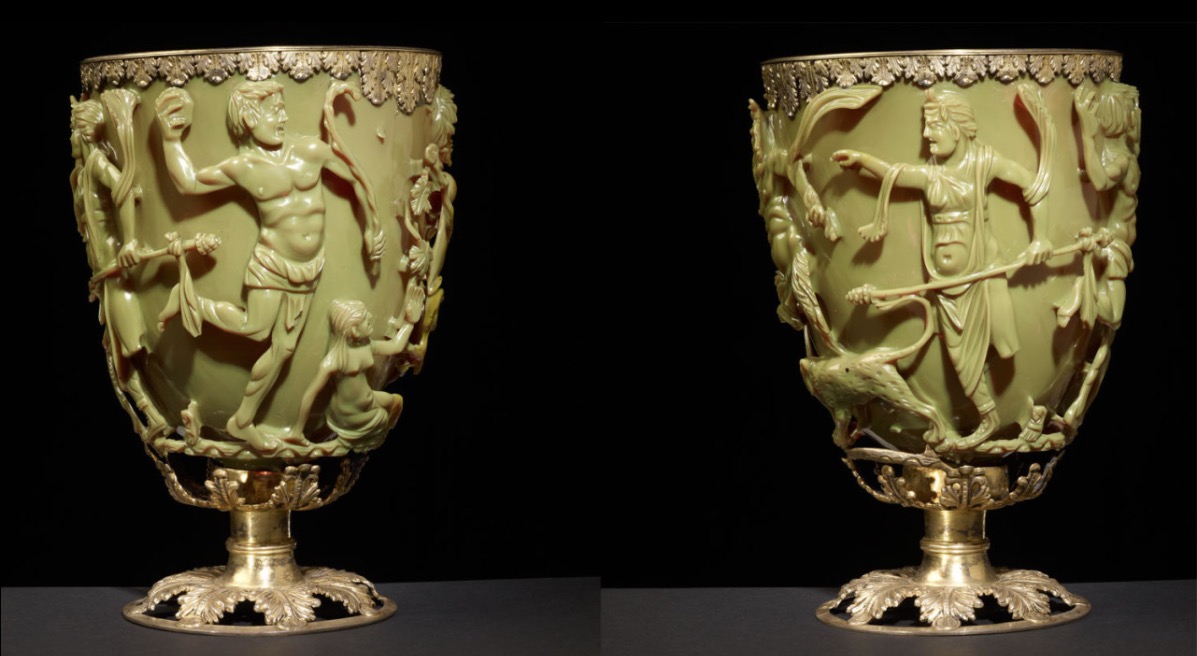La Lycurgus Cup is the extraordinary testimony of the "Nanotechnology" of the Roman era.
About 1600 years ago the Roman artisans were the pioneers of nanotechnology with the creation of the Lycurgus cup.
Un Artigian Roman had created a work of art: the Lycurgus Cup, a chalice, which according to how it was lit changed color.
Scientists took about 40 years to solve the mystery hidden in the glass of the artifact.
This effect is the characteristic of dichroic glass.
To achieve this effect it is necessary to contaminate the glass with nanoparticles di gold or silver, dispersed in the glassy volume.
It is not clear how the ancient Romans obtained dichroic glass, although it is likely that the effect was obtained by chance, not sought but obtained by pure chance.
However, the discovery of other artifacts of this type, even if found only in fragments, confirm that the Roman craftsmen they had including the mechanism which distinguishes dichroic glass.
However, the addition of these metals is not sufficient to produce that particular optical effect, if they did not form sub-microscopic crystals, called colloids, responsible for the phenomenon of light scattering.
THEaddition of metals, or metal oxides, it was not an unknown practice to the Roman glassmakers, who made red and brown glass using copper.
Coloring the glass with gold and silver was not supposed to be a custom, most likely there the magic of the Lycurgus Cup color is due to a stroke of luck.
To purposely obtain that result, it was necessary to control a large number of factors, such as the concentration of metals and the size of the particles, the oxidation state of some elements, the time and temperature of heating.
It is unlikely that Roman artisans were able to control this whole series of processes over 1.600 years ago, and in fact the Lycurgus Cup is a exceptional example, one of the most technically sophisticated glass objects produced before the modern era.
Ian Freestone, one of the experts who studied the cup, thinks the Roman craftsmen “They were highly skilled, but not in nanotechnology. They didn't know they were working on the nanoscale ”.
This type of chalice, called a diatretic cup, has a smooth internal cup and a decorative external cage, made by carving the glass.
The decoration of the Lycurgus Cup represents the mythical King Lycurgus, guilty of the death of Ambrosia, the nymph who raised the god Dionysus. Transformed into a vine, Ambrosia envelops the king with its tendrils, to the point of killing him, while Dionysus and two of his followers watch the scene amused.
They are about fifty the diatreta cups have reached the present day, but only very few still intact.
The Lycurgus Cup is the only completely intact Roman artefact in dichroic glass, “The most spectacular cup of that period".
La Cup of Lycurgus, was acquired by British Museum years' 50.
Source vanillamagazine.it
Source images: British Museum



